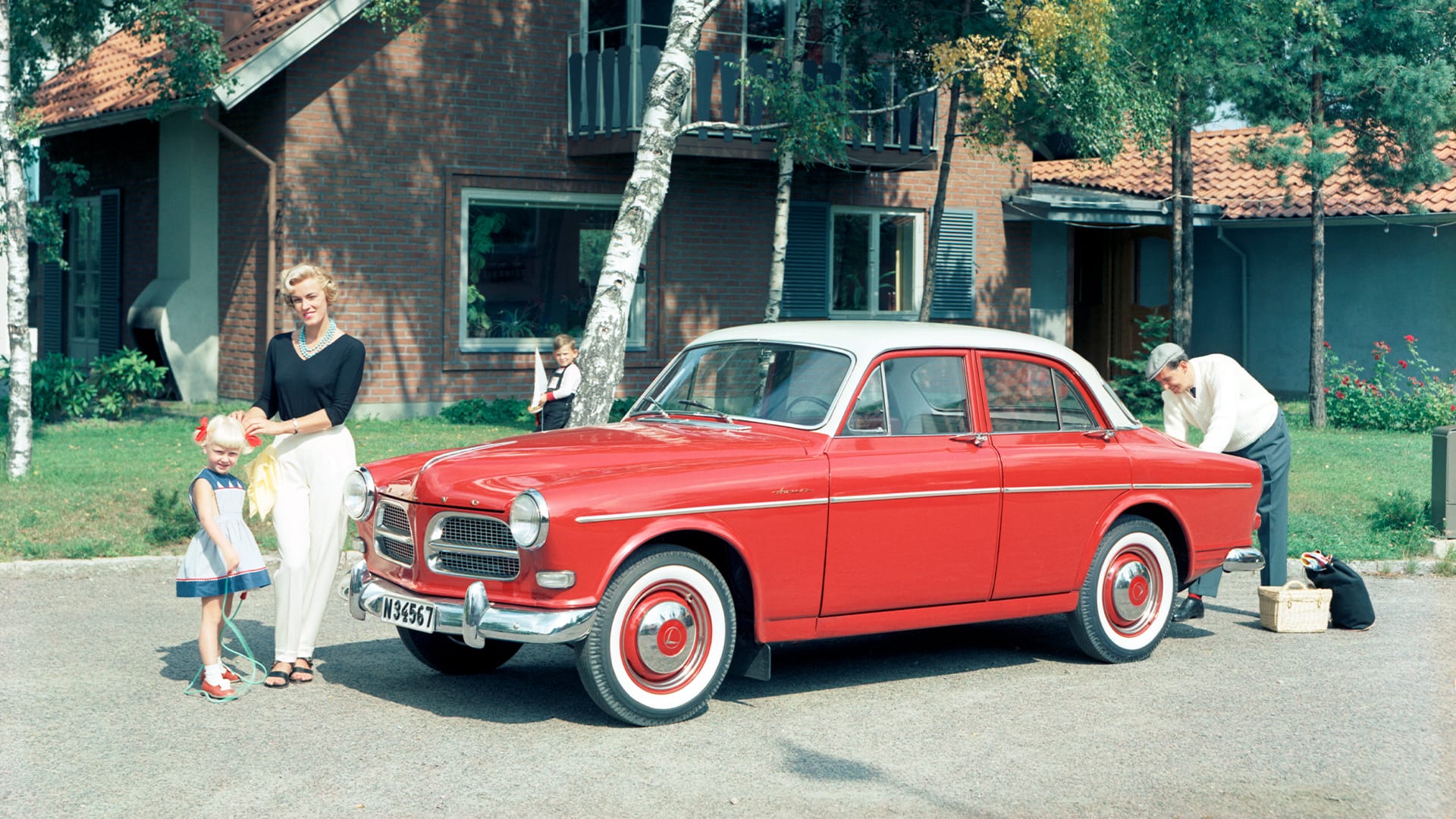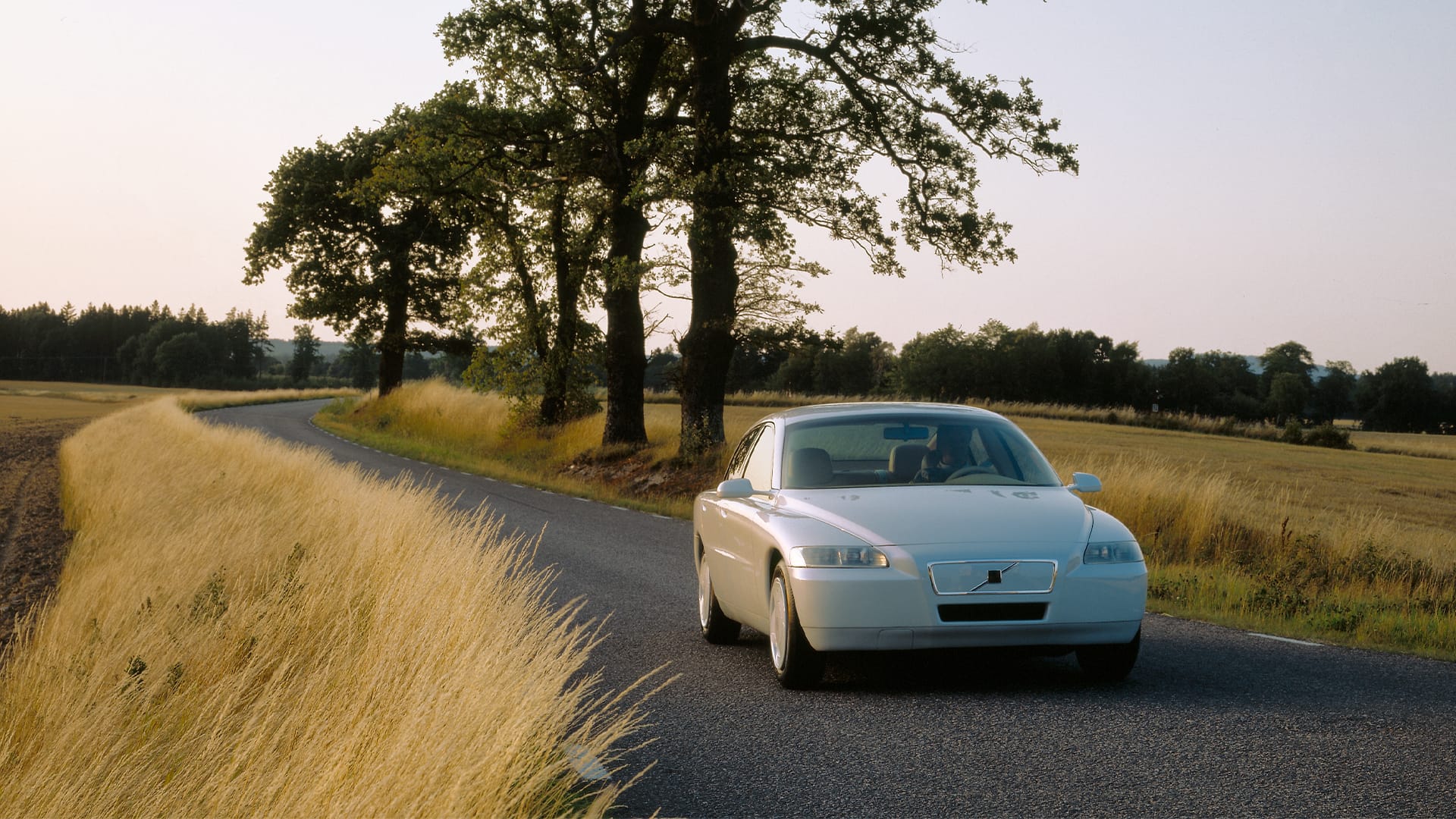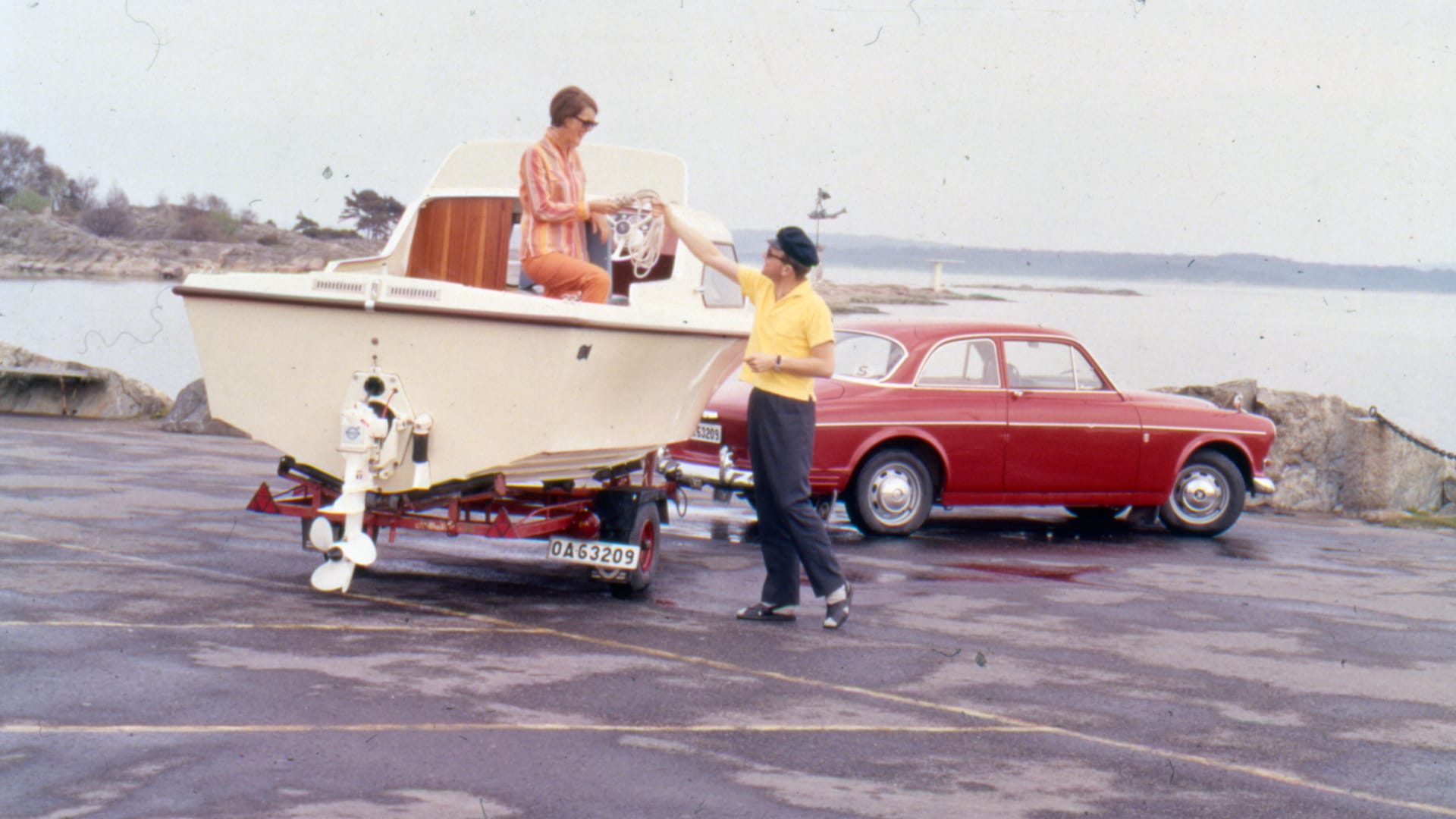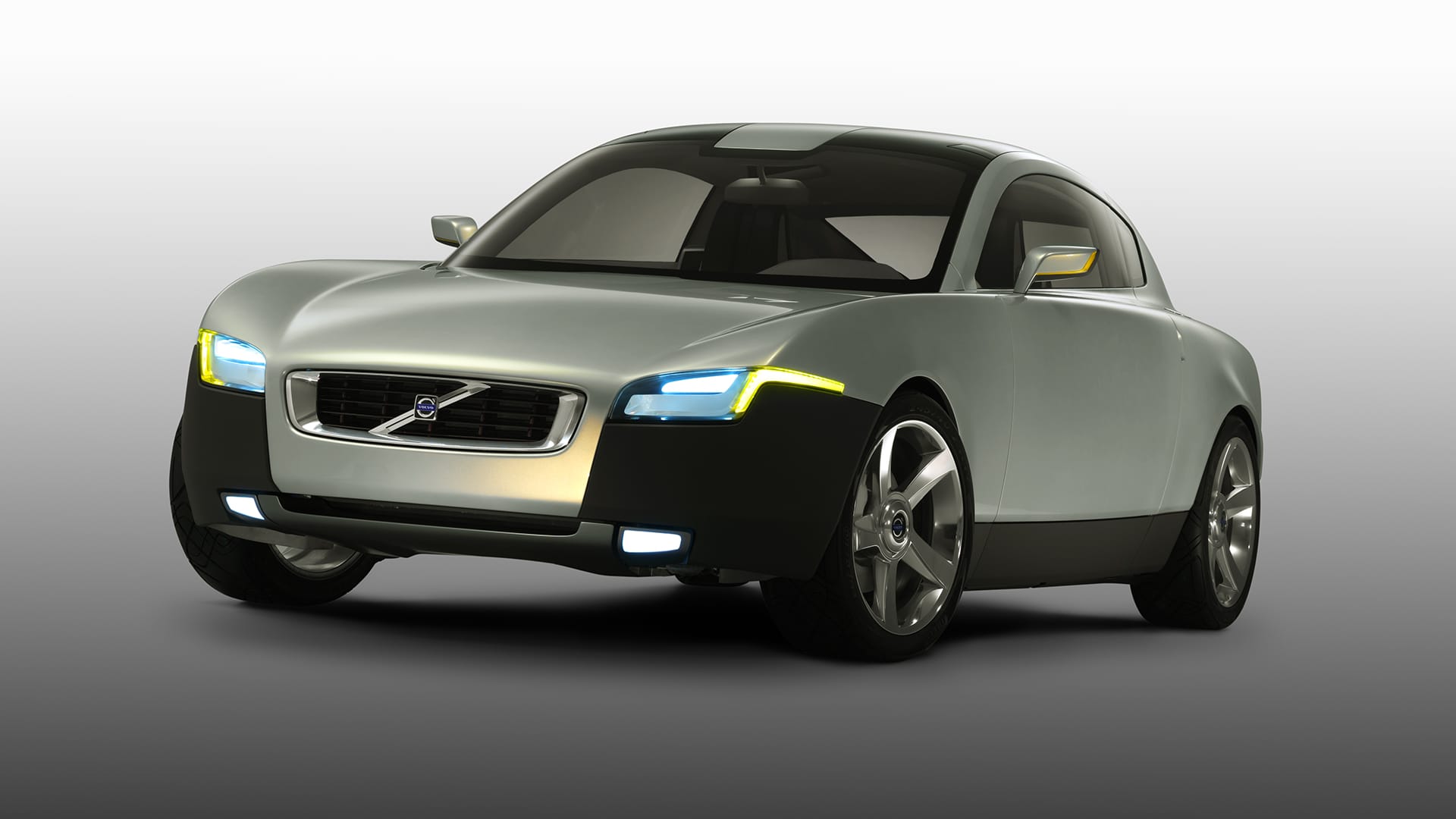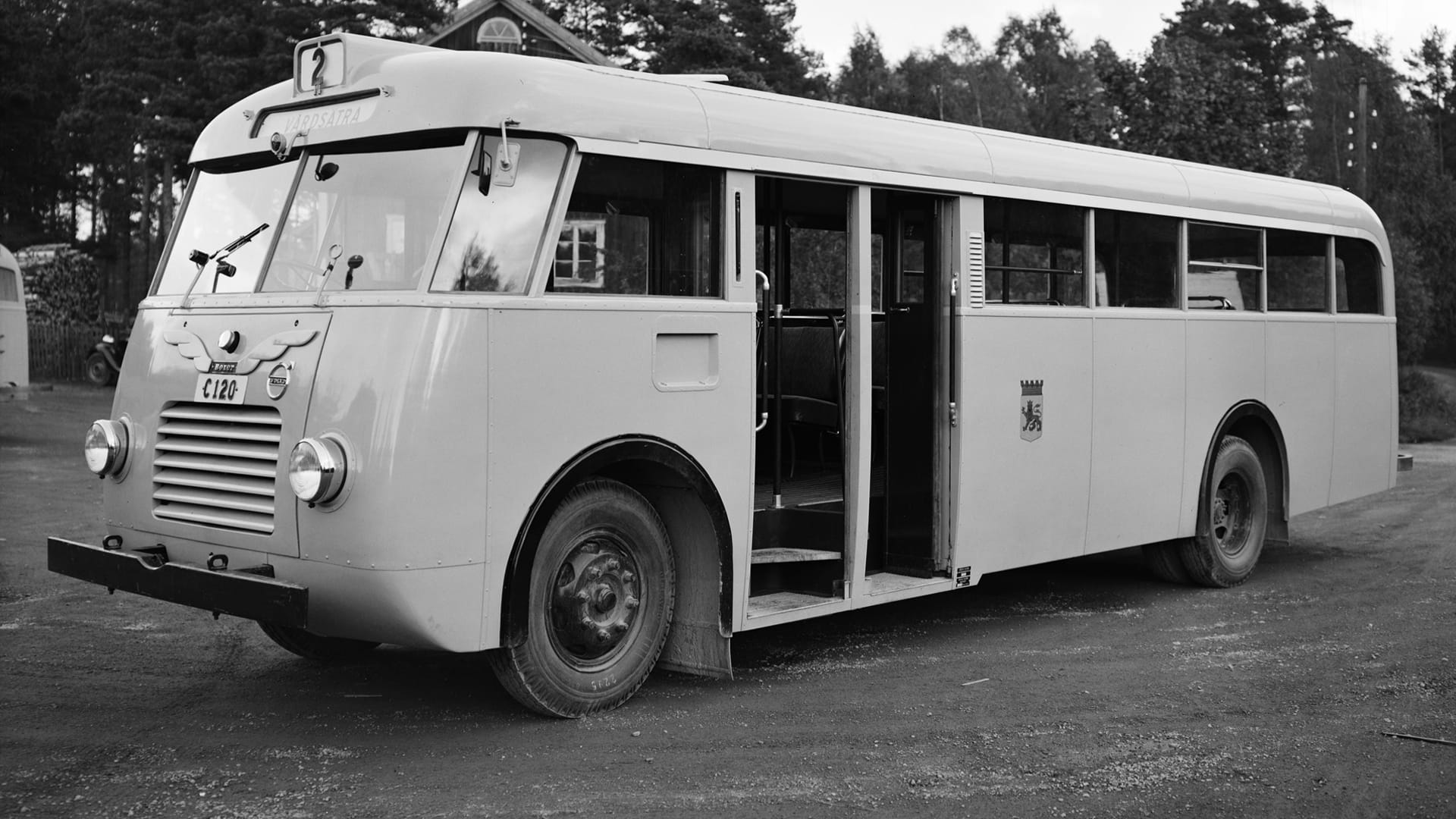Volvo XC90

A superb SUV
Volvo waits a long time to enter the SUV market. In return, Volvo's engineers manage to solve many of the problems present in competitors' models, especially regarding safety.
And when the XC90 is launched in 2002, it turns out that the car arrives at just the right time. The model becomes one of Volvo's most successful of all time and generates an annual export value of 40 billion SEK for Sweden. Behind the development is a reference group of women in California, including Swedish Hollywood star Maud Adams. They contribute to making the XC90 as practical as a minibus - but still a genuine SUV.
Well-balanced
Minivans, or minibuses, become increasingly common and devoid of identity over the years - and in the eyes of most, in the USA, they're disparagingly labelled "soccer mom cars." At the same time, the SUVs on the market receive criticism for being too masculine and aggressive, both in terms of technology and character. In this context, Volvo introduces the new XC90 in 2002, which takes the best from both worlds while avoiding the worst.
Investing in SUVs
Customers still get a practical car, with room for seven passengers. However, the design is credible for an SUV, just a bit softer. For many years, Volvo has no plans to manufacture an SUV, even as more and more buyers, especially in the USA, embrace the SUV trend. However, Volvo's President for the USA market at the time, Hans-Olov Olsson, sees where the market is heading and manages to convince the company's CEO, Tuve Johannesson, to invest in an SUV in 1998.
Design from California
The project is named P28, and the model is based on the same platform as the Volvo S80, which premieres in 1998. In August of the same year, Hans Wikman is tasked with proposing a seven-seater SUV that must not be too large. In May of the following year, the decision to manufacture the car is made at a meeting at the Arizona Proving Ground, where three design proposals are presented. Two of the three proposals come from Gothenburg, while the third, created by American Doug Frasher at the Volvo Concept & Monitoring Centre in California, is the one chosen.
Reducing the risk of rollover
Frasher has already been responsible for the design of the S80 and will later also design the best-selling XC60. Hans Wikman, now the project manager, is nervous about the meeting: two SUV projects have already been scrapped - but this time, it gets the go-ahead. However, given Volvo's safety image, the model must be designed in a new way, different from existing SUVs. For example, the risk of rollover must be minimized.
Five safety innovations
When the car is unveiled, it contains five world firsts in safety. The risk of rollover is reduced with two systems: Roll Stability Control, which uses a gyro sensor to detect and counteract the risk of rollover, and Roll Over Protection System (ROPS), which optimizes protection for everyone in the car if it were to roll over. This is achieved through a reinforced structure, airbags, inflatable curtains, and seat belt tensioners for all seats.
Showcasing safety
To be less aggressive towards other cars in a crash - something body-on-frame SUVs prove to be - Volvo's engineers design a lower cross member in the front, allowing the XC90 to act more like a passenger car in a collision and have the ability to absorb crash energy. Another safety innovation is an integrated, adjustable child seat in the second row.
Volvo showcases the safety of the XC90 to the press at an event in 2002. A car rolls over three times and ends up lying on its right side. However, the roof structure is largely intact - and the journalists present subsequently applaud spontaneously.
Female reference group
The XC90 gains more features borrowed from traditional passenger cars: a flat load floor behind the front seats, driving characteristics and comfort, and low fuel consumption. All of these are qualities demanded by the unique reference group consisting solely of women who assist in the development of the XC90. It is formed in 1999 and recruited in Southern California, which is an established SUV market and geographically close to the Volvo Car Corporation Concept & Monitoring Centre in Camarillo.
Originally, the group consists of 24 women, with different backgrounds: lawyer, businesswoman, consultant, mother, and actress - namely Hollywood star and "Bond girl" Maud Adams, who was born in Notviken, Norrbotten, Sweden. The first meeting takes place at the home of one of Volvo's project leaders, and the group discusses competitors' models at length, what they like and miss. Already then, there are requests for the XC90 to be more like a passenger car to drive, have better comfort since they spend so much time in the car, be easy to use, and have a design that doesn't seem intimidating. Masculine, but not macho.
Protective companion
Much later, Doug Frasher says, "An interesting phenomenon is that women don't necessarily want a feminine design language. They view an SUV as a protective companion, one that would never let them down." Several meetings are held with the group, which comes up with various suggestions, ideas, and opinions on the design and features that Volvo is planning. In November 2000, they see the final prototype - and the reactions are extremely positive. The female group likes the sculptural hood and describes it as sophisticated and elegant, with some even saying sporty. The conclusion is that Volvo has found a good balance between ruggedness and elegance.
Transverse engines
The Volvo XC90 is launched with five- and six-cylinder engines, all mounted transversely like in the S80. The 2.5-liter five-cylinder engine with 210 hp becomes common in Sweden. The first six-cylinder engine has a twin-turbo, a cylinder volume of 2.9 litres, and an output of 272 hp. The 2.4-liter five-cylinder diesel engines have different power outputs, depending on the generation. In 2005, a V8 engine with a displacement of 4.4 litres and 315 hp is introduced, supplied by the Japanese brand Yamaha.
Premiere in Detroit
The XC90 premieres at the Detroit Auto Show on January 7, 2002, and a year later, it is named "Car of the Year 2003" at the same show, one of about 110 awards the model receives over the years. The jury member for Car of the Year, Don McCosh at Popular Science, captures the essence of the XC90 in his reasoning: "The XC90 is a vehicle that successfully addresses most of the critical points of today's SUVs in the top segment. From the boron-reinforced roof to the technology protecting the occupants, to the rollover protection. The XC90 has truly succeeded in swinging the technology pendulum in favour of SUVs compared to conventional sedan models. It does so with an elegant, timeless design and an impressive functional interior package."
Beyond expectations
Volvo plans to sell a maximum of 50,000 XC90s per year, but even before the launch, dealers have received 15,000 orders, and sales exceed expectations by far. In 2005, a peak is reached with 86,000.







